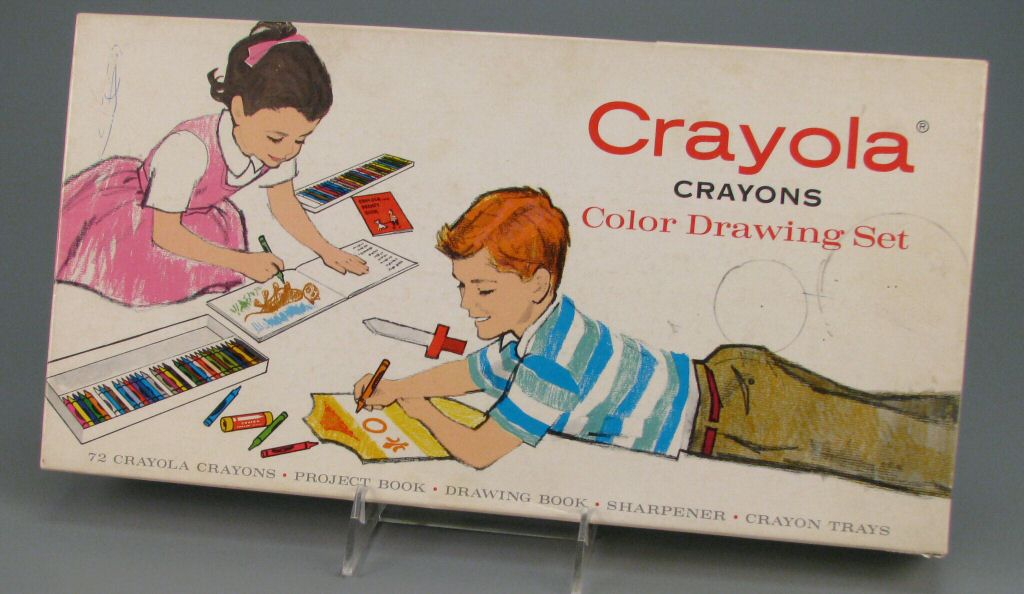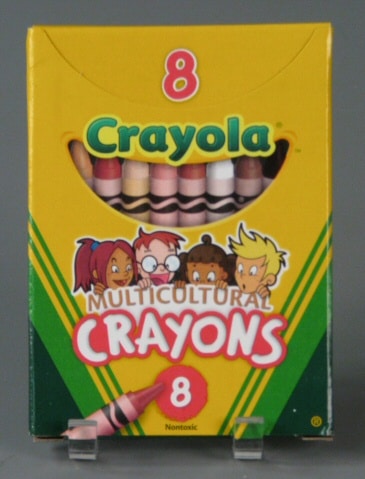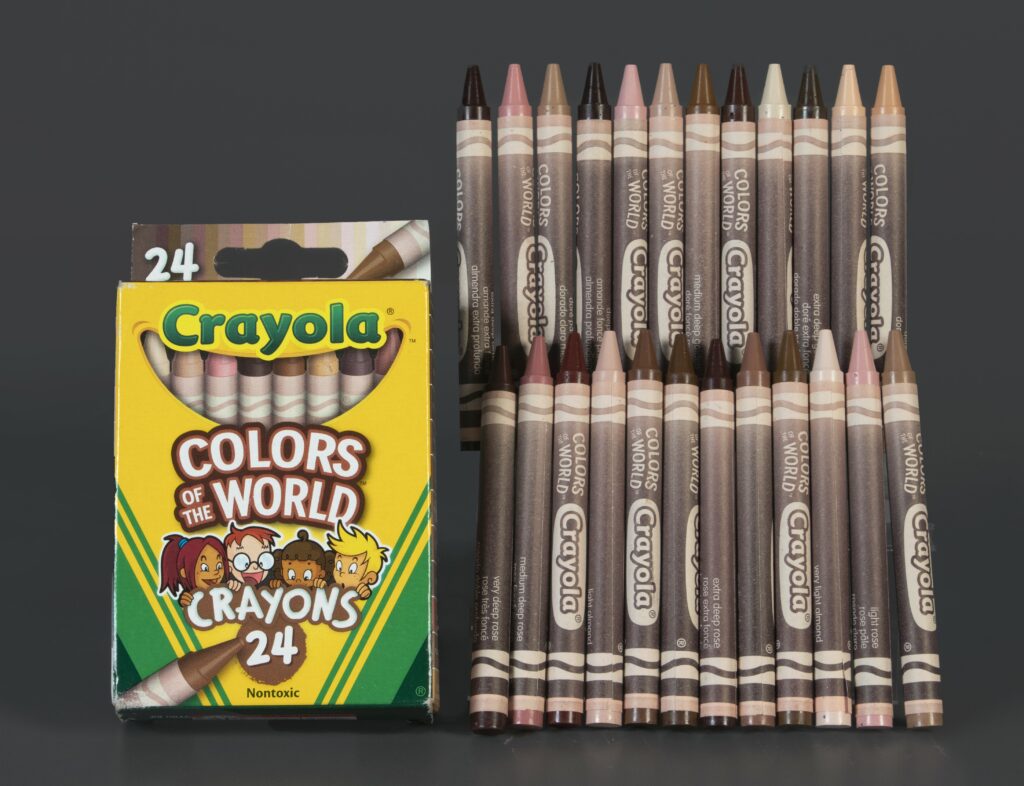
In 1900, Binney & Smith ventured into the school supply business. The company created handy multicolored non-toxic wax sticks in black, brown, orange, violet, blue, green, red, and yellow. Alice Binney combined the French words for “chalk” and “oily” (craie and olea) to make “Crayola.” The crayons hit the market in 1903 and kids snapped them up. Over the years, appealing new colors tracked fashion trends and cultural change.
One of Crayola’s most problematic colors was called Flesh Tint. First introduced in 1903, Flesh Tint came packaged in the No. 51 box. Flesh Tint was not available in boxed sets between 1935 and 1939 and between 1944 and 1949, but the reason for this is unclear. It was reintroduced as Flesh in 1949. Coincidentally, this was shortly after Kodak created Shirley Cards, reference photos used by technicians to calibrate colors and hues. Shirley, the Kodak model photographed for the cards, had ivory skin. For decades, Shirley defined what a photo-worthy skin tone should be, and she signified that the idealized consumer was white. What does this have to do with Flesh Tint? It reminded me of Harvard Professor Sarah Lewis’ essay, “The Racial Bias Built Into Photography,” in which she noted that “being seen accurately by the camera was a key to representational justice.” Lewis further explained that inclusive representation matters so much because “you can’t become what you can’t accurately see.”
We are inundated with notions of beauty from a young age and kids are paying attention. In the early 1960s, doctoral candidate June Handler researched kindergarten children’s prejudices toward Black people. In her abstract, she found that white children made disparaging comments toward their Black peers, including taunts that Black children “don’t have flesh,” because their skin tone did not match the Flesh Crayola crayon. Handler wrote to Crayola to advocate a name change. In 1962, Crayola renamed Flesh to Peach.

Some early companies began to recognize the importance of play in building self-esteem and respect, but it was not until the 1990s that several major manufacturers were receptive to inclusivity and diversity. Consumers, educators, and minority-owned businesses demonstrated that there was a market for Black toys. Crayola introduced Multicultural Crayons in 1992. The set included mahogany, peach, tan, sepia, burnt sienna, and apricot. Black and white were included for blending. The names suggest that these colors already existed and were not in anyway unique to individual skin tones. In 2019, Mimi Dixon, manager of brand equity and activation at Crayola, examined this multicultural initiative and determined it was time for an authentic change.
Dixon knew it was critical to involve researchers and designers from outside of the organization. She said, “At Crayola, we do know color. That’s who we are. But we don’t necessarily know skin tones. No one has mastered diversity and inclusion; no one has because of the journey.” Dixon believed the beauty industry had successfully introduced colors that reflected diversity and inclusivity and advised Crayola to engage with consultants from that field. Crayola sought out Victor Casale, formerly Chief Chemist and Managing Director, R&D of MAC Cosmetics and Cofounder and Chief Innovation Officer of Cover FX, to help diversify their product line.

In 2020, Crayola introduced Colors of the World, crayon shades that achieved a representation of all-inclusive shades and undertones into a palette. The 24-pack included medium almond, medium deep rose, light medium almond, light medium rose, light almond, light rose, light medium golden, very light almond, light golden, very light rose, very light golden, extra light almond, deepest almond, extra deep golden, extra deep rose, extra deep almond, very deep almond, deep golden, medium deep golden, deep almond, very deep rose, deep rose, medium deep almond, and medium golden. The 32-pack also included four hair and four eye color crayons. Crayola also created the “Draw your #TrueSelfie campaign” and invited participants to use the crayons to draw self-portraits, which are seen as an artistic expression of self-esteem. By July of 2020, the campaign resulted in 2.4 billion media impressions and celebrity social advocates like Patricia Arquette and Holly Robinson Peete.
In 2021, the Census Bureau released a report that the number of non-Hispanic Americans who identified as multiracial had jumped by 127 percent over the decade and kids are at the forefront of this change. To create equal and accurate representation, we need to ensure a sense of belonging. Crayola demonstrated the importance of accountability and intentional actions.
 Hours 10 a.m.–5 p.m. | Fri. & Sat. till 8 p.m.
Hours 10 a.m.–5 p.m. | Fri. & Sat. till 8 p.m.